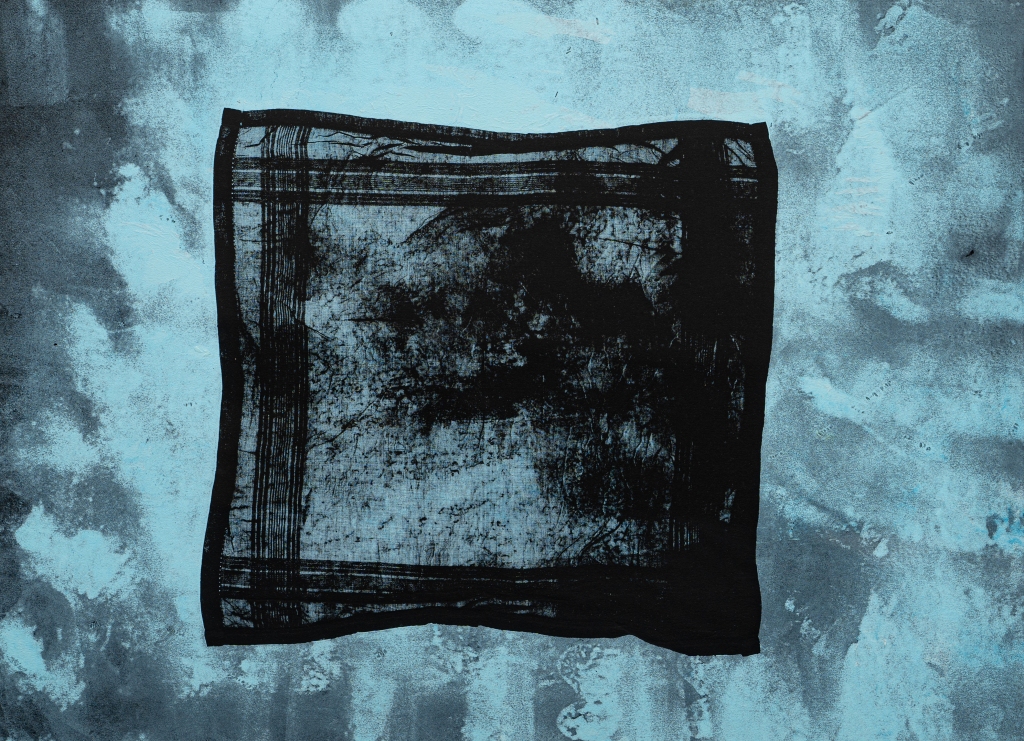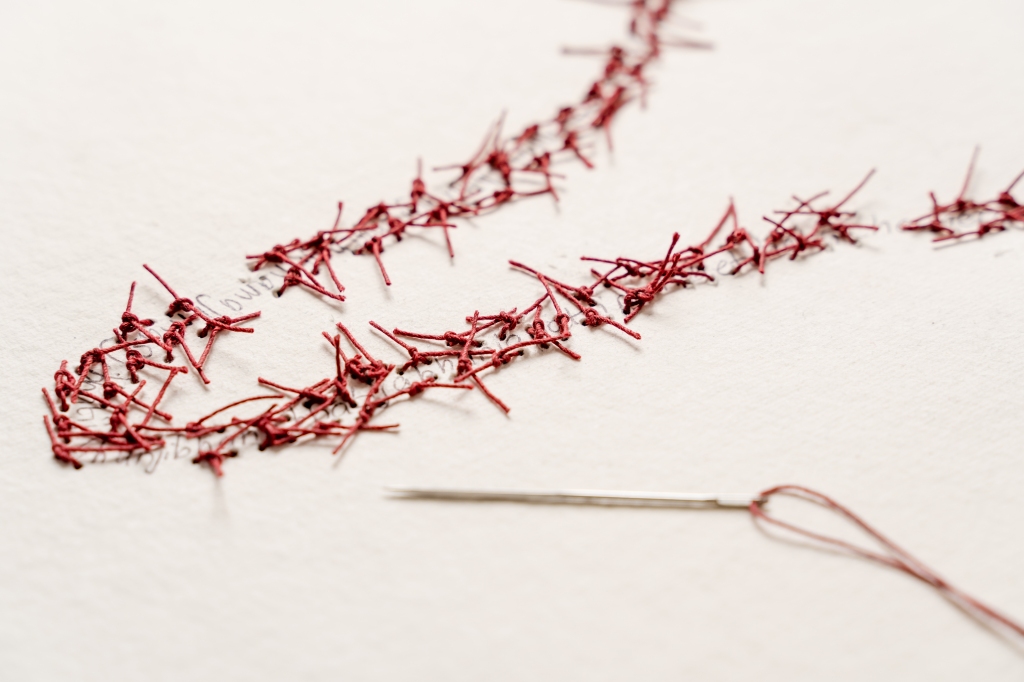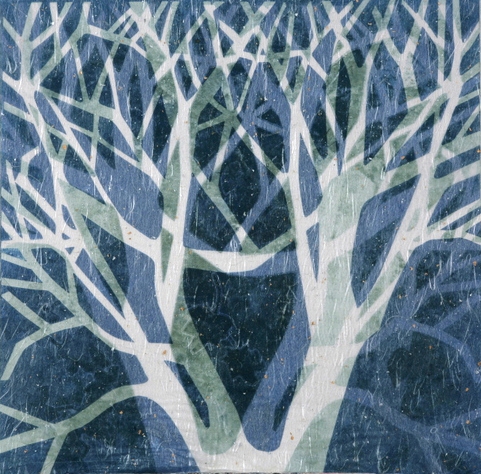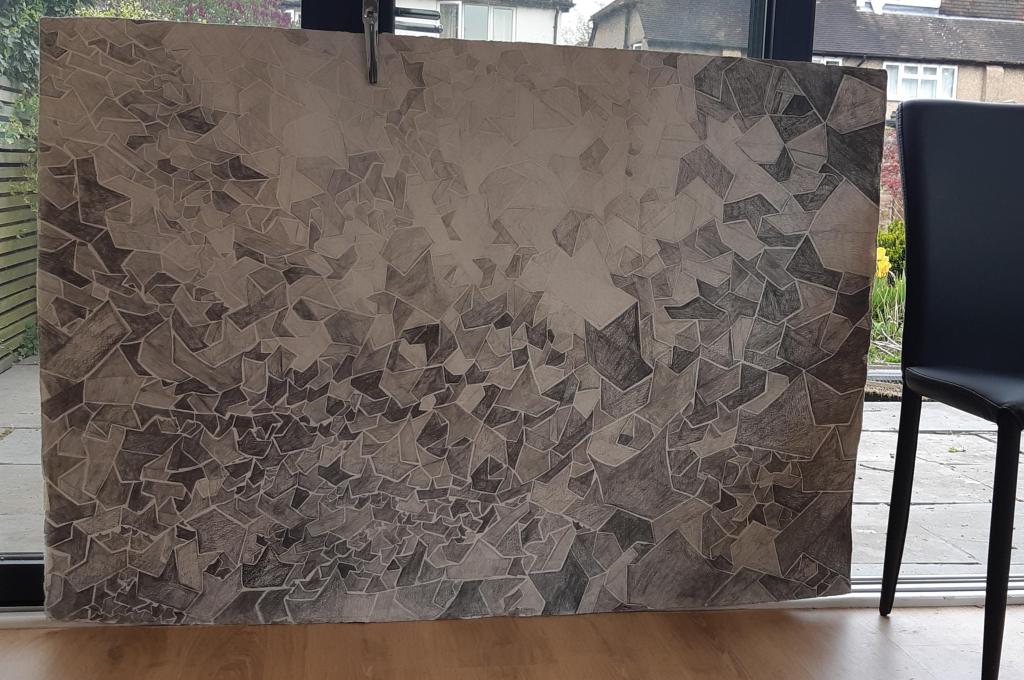
I have had so much happening that I haven’t done a post in ages but I have big news! The Whitworth have acquired one of my works for their permanent collection. It is currently on show for a year as part of their Exchanges exhibition. Click on Details for further info!
Who knew that when my Mumma gave me dozens of my Dad’s hankies during my MA that I would end up producing a work that is now hanging in one of the galleries that I had wanted to show in? It means particularly much because this work is about my Dad’s experiences at the 1947 Partition of India and the difficulties of settling here only 17 years later. Dad never spoke about what happened to him and his family at Partition and I have only just started to piece together these stories. Making this work made me feel very connected to him. I have thought a lot about how everyday objects, which we don’t find in museums and galleries, carry precious memories for us. Dad was very dapper and always carried a crisp white hankie in the top pocket of his suit.

Here are some of the works which led up to All My Sorrows! This series called Absent is about Dad, and how memories have gradually faded as the image fades here with each imprinting. Although there is a sense of sadness here there is also the beauty of remembering him. These prints are made on black Somerset























 When I was making Told/Untold and Counted I researched into UNHCR statistics on forcible displacement. They are shocking- there are 70.8 million people worldwide who have been forced to leave their homelands which is 1 every 2 seconds more or less. Looking closely, I realised that 5.6 million of these are Syrians who have fled since the war there began in 2011- that’s a 1/4 of the population approximately. In addition, 6.6 million have been displaced internally. Yet, the destruction of Syria seems to have disappeared from our consciousness -whole cities have been destroyed, there are no green spaces and the infrastructure is gone. But we do not hear about it on the news any longer.
When I was making Told/Untold and Counted I researched into UNHCR statistics on forcible displacement. They are shocking- there are 70.8 million people worldwide who have been forced to leave their homelands which is 1 every 2 seconds more or less. Looking closely, I realised that 5.6 million of these are Syrians who have fled since the war there began in 2011- that’s a 1/4 of the population approximately. In addition, 6.6 million have been displaced internally. Yet, the destruction of Syria seems to have disappeared from our consciousness -whole cities have been destroyed, there are no green spaces and the infrastructure is gone. But we do not hear about it on the news any longer.





